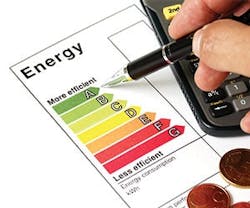Calculate the Full Benefits of Energy Efficiency
Lower utility bills aren’t the only positive result of slashing your facility’s energy consumption. Efficient buildings enjoy a host of benefits that can help you justify your next upgrade, from reduced costs for maintenance materials to lower procurement costs, according to a new study by the American Council for an Energy Efficient Economy (ACEEE).
“The multiple benefits of energy efficiency begin with increased ease of facility management tasks, reduced maintenance costs and improved occupant comfort,” notes the organization. “External benefits are also evident, as businesses build their corporate and brand reputations by demonstrating their efficiencies to customers and shareholders alike.”
The easiest savings to obtain during an energy efficiency initiative fall into the category of concurrent cost reductions, according to the report. Expenses like water use, maintenance and labor for facilities operation, the cost of complying with emissions and workplace safety regulations, and demand and power factor charges naturally decrease when energy use falls. Take the time to quantify the potential savings in this area when you request funding for your next efficiency project – savings from reducing concurrent costs can be substantial and help justify an investment in efficiency.
The report also recommends pursuing tax incentives intended to encourage investment in efficiency. For example, a 2015 study cited by ACEEE estimates that only 3% of eligible organizations have filed for tax deductions under Section 179D, which incentivizes efficiency upgrades. This is sometimes due to “organizational disconnects” between facilities maintenance and finance departments, the report notes: “These disconnects become evident when disputes arise over which department budget will book the proceeds from potential tax benefits.” Get your organization’s financial decision makers on board to iron out questions like this before starting an energy initiative.
Improved capital value is possible, ACEEE notes. Efficient technologies reduce wear on mechanical equipment that consumes energy, which means equipment is replaced less often. Future investments needed to sustain value may also be lower, ACEEE says: “For example, the solar photovoltaic capacity required to serve a building full of old T12 lighting fixtures is greater than the solar capacity required for more efficient T8 or LED fixtures. Similarly, energy efficiency reduces a facility’s need for investment in backup generation capacity.”
The report also names risk abatement as a significant source of savings that is easy to overlook. Energy-related risks include price volatility, which could negatively impact budget performance and profitability. The category also covers asset management risks such as the pace and amount of capital spending required to make up for equipment degradation. “It is difficult to measure the worth of avoided penalties, claims and asset value adjustments,” the study notes. “However, the risk abatement value attributable to energy efficiency varies directly with the magnitude of the potential damages that these measures guard against.”
Energy efficiency also lends itself to soft benefits that are difficult to measure, such as improved occupant comfort and resulting productivity gains. A 2003 study cited in the report discovered an 11% improvement in worker productivity and a 67-90% reduction in churn costs (which are associated with reconfiguring offices in response to changing space needs) that accompanied a 43% energy savings after replacing central HVAC with units scaled for individual workspaces.
The full report is available at aceee.org.
